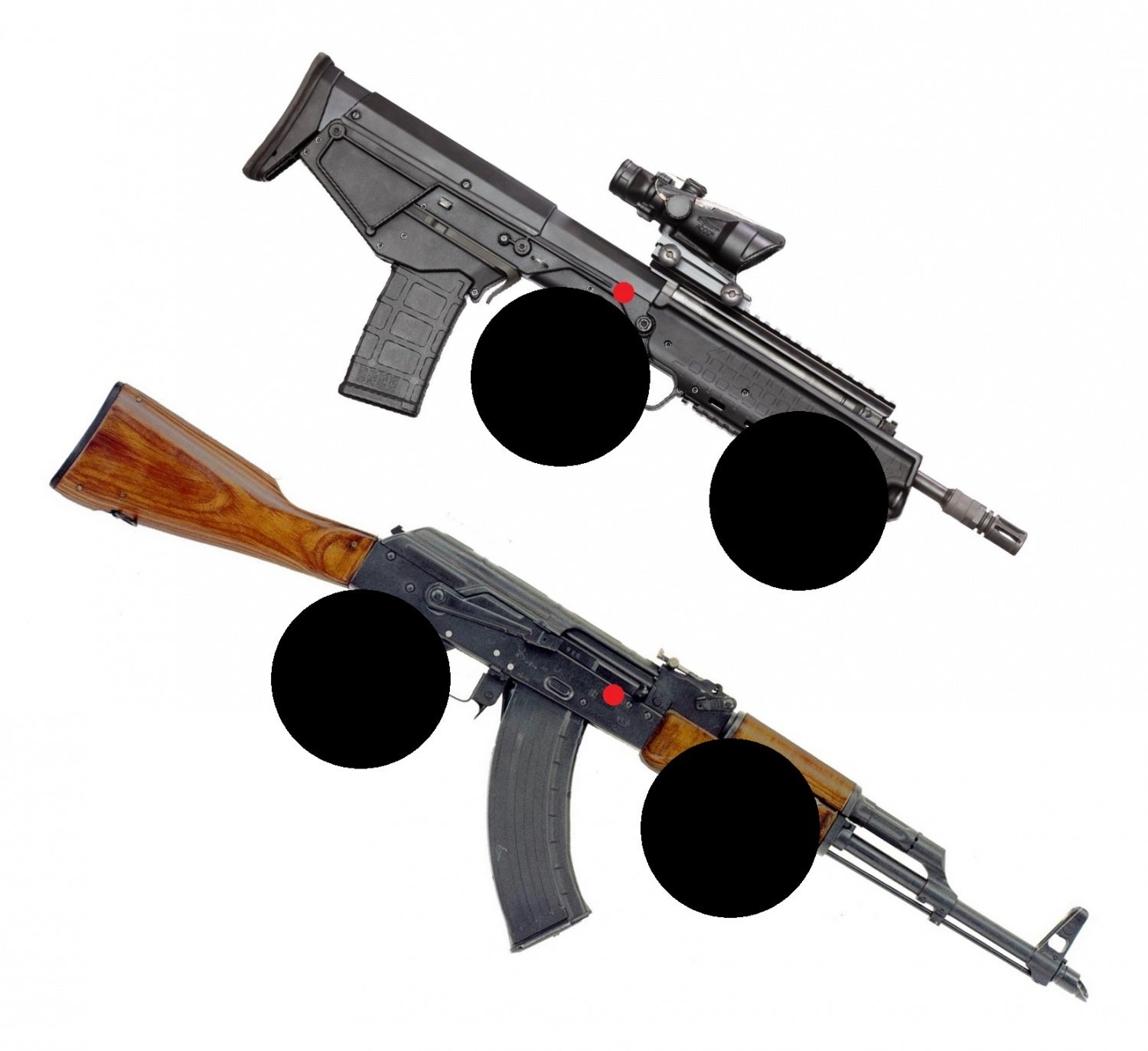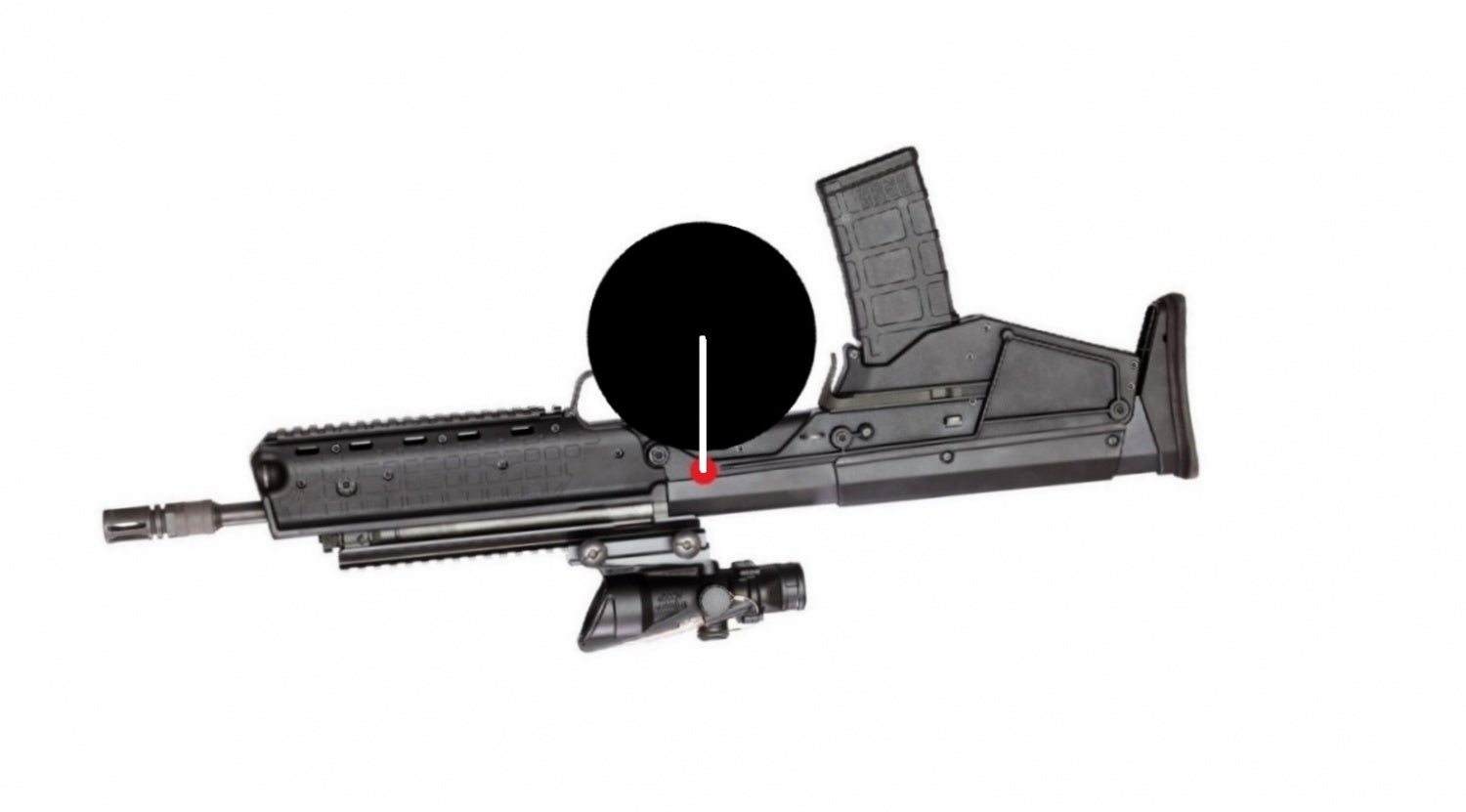The bullpup rifle tends to be – when it comes up – a pretty divisive subject among “tactical” rifle shooters. Bullpup detractors dismiss the layout as clunky and awkward, while its proponents cite the advantage of longer barrels and shorter overall lengths. Both camps are often correct in their criticism, but there is another aspect of the bullpup that I think often goes poorly addressed – if it is addressed at all. That is the subject of balance.
A quick aside regarding my personal feelings for bullpups: I don’t hate them, and find them to be an interesting and promising idea, provided designers of future bullpups step up their game to solve the many challenges presented by the concept. However, I also think modern bullpups (even the best ones currently on the market) aren’t really competitive with the common conventional rifle in many important ways. Today we’ll talk about one of those ways: Their balance.
You might be thinking: hold on, aren’t bullpups supposed to have better balance than conventional rifles? Well, yes and no. It’s true that the rearward balance of a bullpup makes it much easier to swing the muzzle of the rifle around for quick target changes – in fact, it was that characteristic that enamored me to bullpups the first time I encountered them in the wild – but that same balance point is less than ideal in other ways.
Now, let me show you why bullpup rifles are inconvenient to carry around. First, let’s just take a look at a modern bullpup compared to one of its conventional counterparts:
I chose these two because the images are clear, and I own examples of both (expect the RDB to feature in later articles). What we need to know is how these weapons balance not just from butt to muzzle, but also from top to bottom. Therefore, I have added red dots representing the rifles’ centers of gravity, according to my measurements:
(Note that the RDB has a more forward – and, in my opinion, better – balance than most bullpups, which is one of the reasons I used it for this comparison. If I used a Desert Tech MDR, for example, the dot would be somewhere aft of the buttplate.)
With just that we don’t yet have a good picture of the problem, so let’s rotate them a little and add hand markers. The image below represents how the rifles would be carried in the hands, as if on patrol for example. The rifle is held between the two hands, one on the firing grip, the other on the forend:
Note how the RDB’s center of balance is above the firing hand. This gives it a very pronounced “holding a hammer upright by the base of the handle” effect when toting it around. Not only that, but almost all the weight naturally wants to be supported by your firing hand, where a conventional rifle sits right between both hands. Subjectively, I’d say the weight distribution for the RDB is 90/10 firing hand to support hand, where the AK is about 30/70. That’s not a scientific measurement, but I think it’s reasonably illustrative of the problem here.
Basically, bullpups will tire the shooter more because the weight distribution when carrying them in the hands is much less evenly distributed. Not only that, but where the weight distribution of the AK and other conventional rifles rests more on the support hand (which isn’t doing the dextrous work of pulling triggers), the distribution for bullpups is overwhelmingly on the firing hand. This means that after a day of carrying the rifles around, the firing hand will be much more tired than with a conventional, while the support hand will be fresh; exactly the opposite of what a rifleman wants!
I found this effect to be so annoying that I went out and bought two different foregrips to try to mitigate it. Between the two, I found the Magpul AFG2 was the better solution, since it allowed me to rest more of the weight on my support hand, but it only addresses the problem to a degree. I still notice this problem all the time with this rifle while using and shooting it.
This weird balance also causes another issue when holding the rifle in one hand: The rifle wants to “hammer drop” in your hand to a position where the muzzle is pointing behind you and the optic is pointing towards the ground. I found this very weird, and not terribly convenient. You can either A.) just let the rifle drop, making returning to the two-hand grip a little awkward, or B.) clench your hand and keep the gun upright, which tires your firing hand out real quick. To visualize this:
Note how the grip is in a weird position with the RDB when it is center of mass down. This means when relaxing your hold on the the rifle with just a single hand, you have to either severely twist your wrist or shift your grip into a strange position. I find this really inconvenient, since it makes doing anything while holding the rifle in this way a sort of weird juggling act where you have to attend to the rifle somehow (or just sling it) or struggle with it if you want to use your off hand for anything. With a conventional rifle, I can simply let the rifle drop muzzle down while retaining a relatively normal grip on it.
Before I get hate mail from fans of the bullpup, this is just one negative aspect of bullpup balance. There are several tradeoffs here, involving a number of pros and cons which are weighed differently depending on use. If we imagine this rifle is being used by a military truck driver or other echelon personnel, none of this matters. They are less carrying the weapon than they are wearing it on a sling, and the RDB in particular slings beautifully, and if refined would probably make a great PDW. The reason I bring up the particular downsides that are the subject of this article is to illustrate that balance is a complex issue that will shake out differently for different purposes. For law enforcement, home defenders, or echelon military personnel, the rear balance of a bullpup is probably a net benefit.
For the infantryman, though, the rifle is in his hands all day long. The weird balance of the bullpup means a lot of stress is being put on the rifleman’s shooting wrist, and this definitely would negatively affect his marksmanship ability in my opinion. In an era where riflemen are increasingly being considered precision assets, this seems to me like a non-starter, and it seems like – for the moment, at least – the decision makers in the US Army agree.
 Your Privacy Choices
Your Privacy Choices





